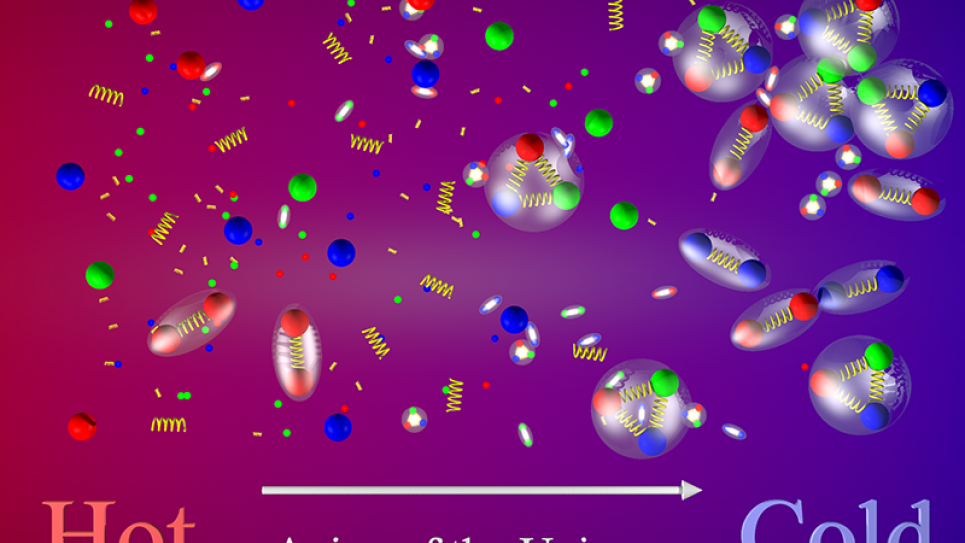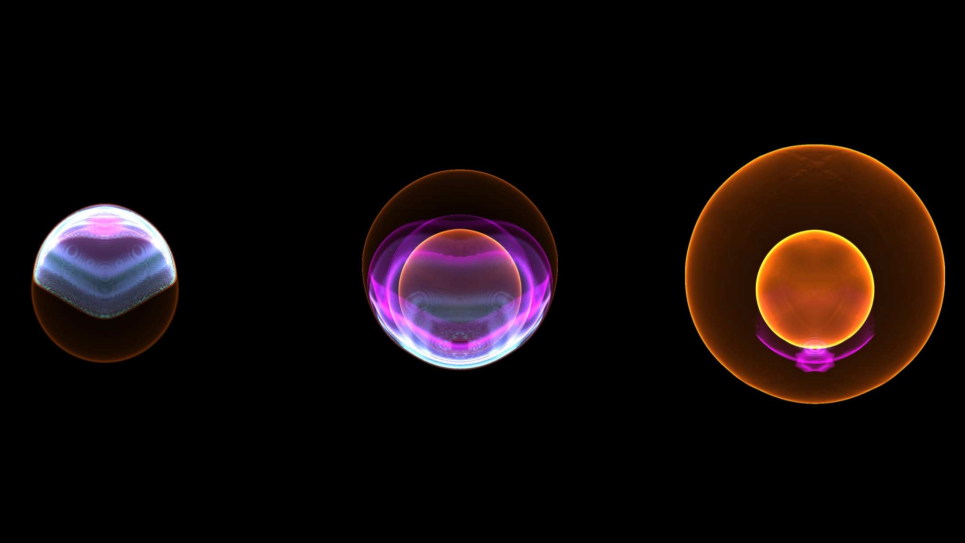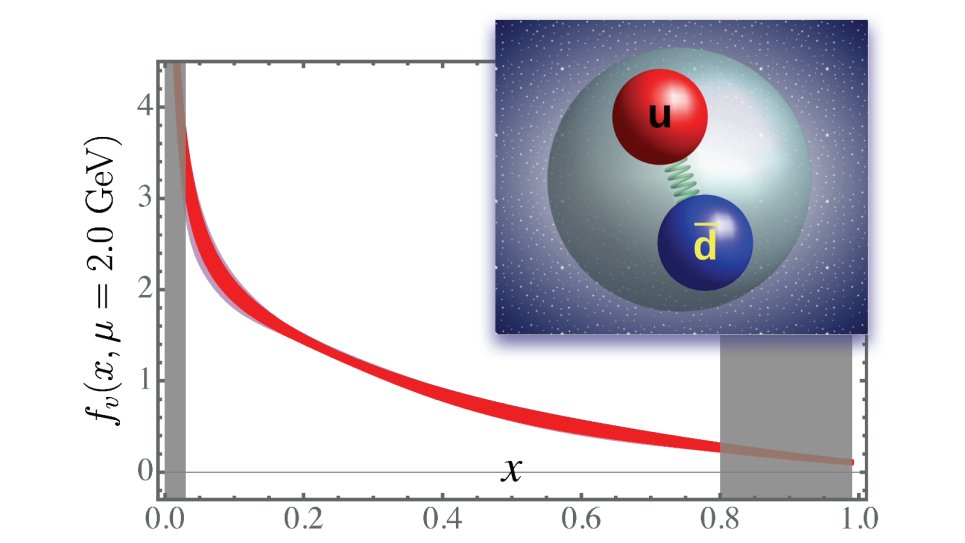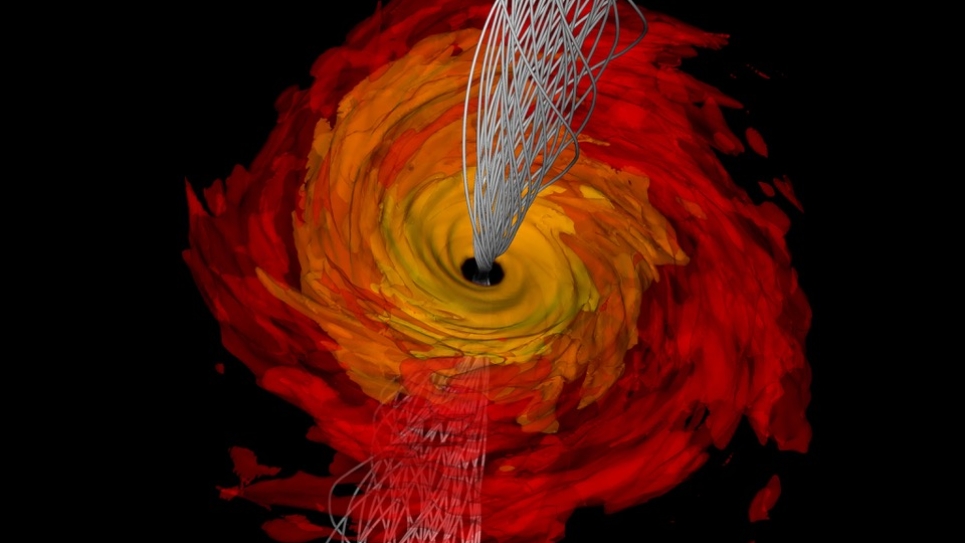
Fundamental Properties of QCD Matter produced at RHIC and the LHC
A few seconds after the Big Bang, the building blocks of matter emerged from a hot, energetic state known as the Quark-Gluon Plasma (QGP)—named for its composition of quark and gluon particles. These building blocks of matter are called hadron particles, and they form when gluons, which carry the strong nuclear force, bind quarks together.
Physicists are recreating the primordial conditions of the QGP experimentally through extreme temperatures and pressures generated in the Relativistic Heavy Ion Collider (RHIC) at Brookhaven National Laboratory in the United States, and the Large Hadron Collider (LHC) at CERN, in Europe. One unexpected discovery from experiments shows that the QGP is almost an ideal liquid, rather than a gaseous-like plasma, with the smallest shear viscosity over entropy density ratio ever observed. This suggests that the QGP is a strongly interacting system. The theory of strong interactions can be studied computationally through lattice Quantum Chromodynamics (QCD), a complex numerical approach to solving quark-gluon interactions.
In previous INCITE projects, this team made key contributions to the QGP research. By integrating and comparing results from the RHIC and LHC, their simulations determined the temperature at which hadrons form and uncovered other details of particle formation. Employing first-principles calculations, which rely on individual interactions at high computational demand, this team will use Mira to address some of the most fundamental unsolved questions in the field, such as a microscopic explanation of the QGP behavior and the propagation of conserved charges in the medium.
The resulting data should help scientists determine the strength of coupling between quarks and gluons in the QGP, how charges propagate through it, and whether the QGP is an ideal liquid. Resolving these and other questions related to the microscopic behavior of the QGP and its transition to hadrons will improve scientific understanding of particle interactions, and the formation of matter in the universe.


